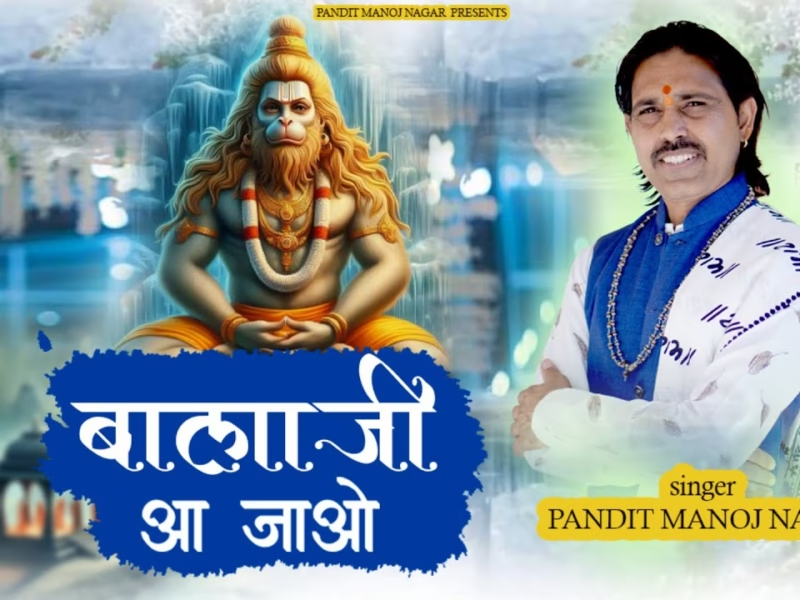Translated by Vidyavachaspati V. Panoli
Om ! O gods, may we hear with our ears what is auspicious;
May we see with our eyes what is auspicious;
May we, while offering our praise to gods
With our bodies strong of limbs,
Enjoy the life which the gods are pleased to grant us.
May Indra of great fame be well disposed to us;
May the all-knowing (or immensely wealthy) Pusha be propitious to us;
May Garuda, the vanquisher of miseries, be well pleased with us;
May Brihaspati grant us all prosperity.
Om ! Peace ! Peace ! Peace !
1. All this is the letter Om. A vivid explanation of this (is begun). All that is past, present, and future is but Om. Whatever transcends the three periods of time, too, is Om.
2. All this is certainly Brahman. This Self is Brahman. This Self, as such, is possessed of four quarters.
3. (The Self) seated in the waking state and called Vaisvanara who, possessed of the consciousness of the exterior, and seven limbs and nineteen mouths, enjoys the gross objects, is the first quarter.
4. (The Self) seated in the state of dream and called Taijasa who, possessed of the consciousness of the interior, and seven limbs and nineteen mouths, enjoys the subtle objects, is the second quarter.
5. Where the sleeper desires not a thing of enjoyment and sees not any dream, that state is deep sleep. (The Self) seated in the state of deep sleep and called Prajna, in whom everything is unified, who is dense with consciousness, who is full of bliss, who is certainly the enjoyer of bliss, and who is the door to the knowledge (of the preceding two states), is the third quarter.
6. This is the Lord of all; this is omniscient; this is the in-dwelling controller (of all); this is the source and indeed the origin and dissolution of all beings.
7. The Fourth is thought of as that which is not conscious of the internal world, nor conscious of the external world, nor conscious of both the worlds, nor dense with consciousness, nor simple consciousness, nor unconsciousness, which is unseen, actionless, incomprehensible, uninferable, unthinkable, indescribable, whose proof consists in the identity of the Self (in all states), in which all phenomena come to a cessation, and which is unchanging, auspicious, and non-dual. That is the Self; that is to be known.
8. That same Self, from the point of view of the syllable, is Om, and viewed from the stand point of the letters, the quarters are the letters, and the letters are the quarters. The letters are a, u and m.
9. Vaisvanara seated in the waking state is the first letter a, owing to its all-pervasiveness or being the first. He who knows thus verily accomplishes all longings and becomes the first.
10. Taijasa seated in the dream is u, the second letter (of Om), owing to the similarity of excellence or intermediate position. He who knows thus verily advances the bounds of his knowledge and becomes equal (to all) and none who is not a knower of Brahman is born in his family.
11. Prajna seated in the state of deep sleep is m, the third letter (of Om), because of his being the measure or the entity wherein all become absorbed. He who knows thus measures all this and absorbs all.
12. That which is without letters (parts) is the Fourth, beyond apprehension through ordinary means, the cessation of the phenomenal world, the auspicious and the non-dual. Thus Om is certainly the Self. He who knows thus enters the Self by the Self.
Om ! O gods, may we hear with our ears what is auspicious;
May we see with our eyes what is auspicious;
May we, while offering our praise to gods
With our bodies strong of limbs,
Enjoy the life which the gods are pleased to grant us.
May Indra of great fame be well disposed to us;
May the all-knowing (or immensely wealthy) Pusha be propitious to us;
May Garuda, the vanquisher of miseries, be well pleased with us;
May Brihaspati grant us all prosperity.
Om ! Peace ! Peace ! Peace !
Here ends the Mandukyopanishad, as contained in the Atharva-Veda.
MANDUKYA KARIKA OF GAUDAPADA
I. AGAMA PRAKARANA
Invocation
1. I bow to that Brahman who pervades the entire world by a diffusion of the rays of knowledge that pervade all things that are moving and unmoving, who after having enjoyed (in the waking state) all objects of enjoyment that are gross, and who again, after having drunk (in the state of dream) all objects born of desire and illumined by the intellect, reposes while experiencing bliss Himself and making us all enjoy by (His own) Maya, and who, through an attribution of Maya, is the fourth in number, and is supreme, immortal and unborn.
2. May he, the Self of the universe, dwelling in the fourth state, protect us, who, after having enjoyed (in the waking state) the gross enjoyments resulting from virtue and vice, enjoys again (in the dream state) the other subtle objects which are created by His own intelligence and illumined by His own light, and who, after having absorbed all of them gradually into Himself and having abandoned all distinctions, becomes devoid of attributes.
I-1. Visva having exterior consciousness is all-pervading, whereas Taijasa has interior consciousness, and Prajna, similarly is dense with consciousness. Thus the One alone is regarded in there ways.
I-2. Visva is seen in the right eye which is its seat of experience, whereas Taijasa is inside the mind and Prajna is in the space inside the heart. In these three ways he dwells in the body.
I-3. Visva is ever the enjoyer of the gross, taijasa of the subtle, and, similarly, Prajna of bliss. Know (therefore) the enjoyment in three ways.
I-4.The grass satisfies Visva, the subtle satisfies Taijasa and, similarly, gladness satisfies Prajna. Know (therefore) the satisfaction in three ways.
I-5. He who knows these two, viz that which is shown to be the thing to be enjoyed and that which is (shown) to be the enjoyer, in the three states, does not become affected, even though enjoying.
I-6. It is a settled fact that coming into being can be said only of positive entities that exist. Prana creates all; and Purusha creates the conscious beings separately.
I-7. Those who think of creation hold it as the manifestation of God’s power; while others regard creation as same as dream and illusion.
I-8. Creation is the mere will of the Lord, say those who thought out well the (process of) creation, but those who rely upon time hold that the birth of beings is from time.
I-9. Some others hold that creation is for the enjoyment (of God), yet others say that it is for His sport. But it is the very nature of the resplendent Being, (for) what desire can he have whose desire is all fulfilled?
I-10. Turiya, the Lord powerful to bring about the cessation of all sorrows, is imperishable, is regarded as the non-dual Lord of all entities, and is all-pervading.
I-11. Visva and Taijasa are regarded as conditioned by cause and effect. Prajna is conditioned by cause. But these two (viz cause and effect) do not exist in Turiya.
I-12. Prajna knows neither himself nor others, neither truth nor untruth. But that Turiya is ever the all seer.
I-13. The non-cognition of duality is common to both Prajna and Turiya. Prajna is possessed of sleep of the nature of cause, whereas that sleep does not exist in Turiya.
I-14. The first two (viz Visva and taijasa) are associated with dream and sleep, but Prajna (is associated) with sleep devoid of dream. The knowers of Brahman do not see either sleep or dream in Turiya.
I-15. Dream belongs to him who perceives wrongly and sleep to him who knows not Reality. When the false notion of these two comes to an end, the state of Turiya is attained.
I-16. When the individual Self, sleeping under the influence of Maya that is beginningless, is awakened, then he realises (Turiya that is) unborn, sleepless, dreamless and non-dual.
I-17. If a phenomenal world were to exist, it should, no doubt, cease to be. This duality is but an illusion; in reality it is non-dual.
I-18. The notion (such as the teacher, the taught and the scripture) will disappear, if anyone had imagined it. This notion (of the teacher etc.,) is for the purpose of instruction. When (the Truth is) realised, duality does not exist.
I-19. When the identity of Visva with the letter a is meant, ie., when the identity of Visva with the letter a is admitted, the common feature of being the first is seen to be obvious, as also the common feature of all-pervasiveness.
I-20. In the event of Taijasa being apprehended as identical with u, ie, when the identity of taijasa with the letter u is admitted, the common feature of superiority is seen clearly and so, too, is the intermediate position.
I-21. In the even of Prajna being apprehended as identical with m, ie, when the identity of Prajna with the letter m is admitted, the common feature of being the measure is seen to be obvious and so too is the common feature of absorption.
I-22. He who knows conclusively the common similarities in the three states, becomes worthy of worship and adoration by all beings, and is also a great sage.
I-23. The letter a leads to Visva and the letter u to Taijasa. Again, the letter m (leads) to Prajna. For the one who is free from letters, there is no attainment.
I-24. Om should be known, quarter by quarter. It is beyond doubt that the quarters (of the self) are the letters (of Om). Having known Om, quarter by quarter, one should not think of anything else.
I-25. Let the mind be fixed on Om, for Om is Brahman, the fearless. For him who us ever fixed on Om, there is no fear anywhere.
I-26. Om is indeed the lower Brahman; Om is (also) regarded as the higher (Brahman). Om is without a cause, without interior and exterior, without effect, and is undecaying.
I-27. Om is indeed the beginning, middle and end of everything. Having known Om thus, one attains immediately the identity with the self.
I-28. One should know Om to be the Lord dwelling in the hearts of all. having known the all-pervasive Om, the intelligent one does not grieve.
I-29. He by whom is known Om which is without measure and possessed of infinite magnitude and which is auspicious, since all duality ceases in it, is a sage and none else.
II. VAITATHYA PRAKARANA
II-1. The wise declare the unreality of all objects in a dream because they are located within (the body) and (also) because they are confined within a limited space.
II-2. Since the period is short, one does not go to the place and see. Also, every dreamer, when awakened, does not exist in that place (of dream).
II-3. The non-existence of the chariot etc., (seen in dream) is heard of (in the sruti) from the point of view of reasoning. The knowers of Brahman say that the unreality thus arrived at (through reasoning) is revealed (by the sruti) in the context of dream.
II-4. There is the unreality of the objects even in the waking state. Just as they are unreal in dream, so also are they unreal in the waking state. the objects (in dream) differ owing to the location within the body owing to the spatial limitation.
II-5. The wise say that the states of waking and dream are same, in view of the similarity of the objects (seen in both the states) and in view of the well-known ground of inference.
II-6. That which is non-existent in the beginning and at the end is definitely so in the present (ie., in the middle). The objects, though they bear the mark of the unreal, appear as though real.
II-7. Their utility is opposed in dream. therefore, on the ground of having a beginning and an end, they are regarded as definitely unreal.
II-8. (To see) unusual things (in dream) is indeed an attribute of the dreamer just as it is in the case of those who dwell in heaven. These he perceives by going there, even as one, well instructed, does in this world.
II-9. Even in dream what is imagined by the mind (chitta) within is unreal, while what is grasped outside by the mind is real. But both these are seen to be unreal.
II-10. Even in the waking state what is imagined by the mind within is unreal, while what is grasped by the mind outside is real. It is reasonable to hold both these to be unreal.
II-11. If the objects of both the states be unreal, who comprehends all these and who again imagines them?
II-12. The self-luminous Self, by Its own Maya imagines Itself by Itself and It alone cognises all objects. This is a settled fact of the Vedanta-texts.
II-13. The Lord imagined in diverse forms the worldly objects existing in the mind. With the mind turned outward, He imagines diversely permanent objects (as also impermanent things). Thus the Lord imagines.
II-14. Things that exist within as long as the thought lasts and things that are external and conform to two points of time, are all imaginations alone. The distinction (between them) is caused by nothing else.
II-15. The objects that seem to be unmanifested within the mind, and those that seem to be manifested without, are all mere imaginations, their distinction being the difference in the sense-organs.
II-16. First of all, He imagines the Jiva (individual soul) and then (He imagines) various objects, external and internal. As is (a man’s) knowledge, so is (his) memory of it.
II-17. Just as a rope, the nature of which is not known in the dark, is imagined to be things such as a snake, a water-line, etc., so too is the Self imagined (as various things).
II-18. As when the (real nature of the) rope is known, the illusion ceases and the rope alone remains in its non-dual nature, so too is the ascertainment of the Self.
II-19. (The Self) is imagined as infinite objects like prana etc. This is the Maya of the luminous One by which It itself is deluded, (as it where).
II-20. The knowers of Prana hold Prana (to be the cause of the world), which the knowers of the elements regard the elements (to be the cause). Qualities (are the cause), say the knowers of quality, whereas the knowers of category consider categories (to be so).
II-21. The knowers of the quarters (such as Visva) hold the quarters (to be the cause), while the knowers of sensory objects regard sensory objects (to be the cause). the worlds (are real), say the knowers of the worlds, and the knowers of the gods consider the gods (to be so).
II-22. Those well-versed in the Vedic lore hold the Vedas (to be real), while the sacrificers subscribe it to the sacrifices. Those who know the enjoyer hold the enjoyer (to be real), whereas those familiar with the enjoyable things think of them (to be real).
II-23. Subtlety (is real), say those who know the subtlety, while those familiar with the gross regard it to be so. (Reality is) possessed of a form, say the worshippers of God with form, while the worshippers of the formless (hold the reality) to be formless.
II-24. The astrologers hold time (to be real), while the knowers of directions consider directions (to be so). Those stiff in debate affirm that disputations (lead to the reality), whereas those who aspire after the worlds consider them (to be real).
II-25. The knowers of the mind hold it (to be the Self), while the knowers of the intellect regard it (to be so). The knowers of the heart ascribe (reality to it), whereas it is attributed to virtue and vice by those who know them.
II-26. Some say that twenty-five categories (constitute the reality), whereas others speak of twenty-six. Again, some say that thirty-one categories (constitute it), yet some others hold that they are infinite.
II-27. Those who know the people (and their pleasures) find reality in pleasures. Those who are familiar with the stages of life regard them (as real). The grammarians (ascribe reality) to the words in the masculine, feminine and neuter genders, whereas others (know reality) to be the higher and lower (brahman).
II-28. Those who know all about creation (say that reality consists in) creation. (Reality lies) in dissolution, say those who know it, while those who know about subsistence (hold it to be the reality). All these ideas are always imagined on the Self.
II-29. He to whom (a teacher) might show an object sees that alone (as the reality). That object, too, becoming one with him, protects him. That state of being engrossed culminates in his self-identity with the object shown.
II-30. By these things that are non-separate (from the Self), this Self is manifested as though separate. He who knows this truly comprehends (the meaning of the Vedas) without entertaining any doubt.
II-31. Just as dream and magic, as well as a city in the sky, are seen (to be unreal), so too, is this universe seen (to be unreal) from the Vedanta-texts by the wise.
II-32. There is no dissolution, no origination, none in bondage, none possessed of the means of liberation, none desirous of liberation, and none liberated. This is the ultimate truth.
II-33. This (Self) is imagined to be unreal objects and also to be non-dual. The objects are also imagined on the non-dual (Self). therefore non-duality is auspicious.
II-34. This (world) viewed on the basis of the Self, is not different. Neither does it ever exist independent by itself nor is anything different or non-different (from the Self). Thus know the knowers of Truth.
II-35. By the sages who are free from attachment, fear and anger and well-versed in the Vedas is realised this Self which is beyond all imaginations, in which the phenomenal world ceases to exist and which is non-dual.
II-36. Therefore, having known it thus, one should fix one’s memory on non-duality (ie., should give undivided attention). Having attained the non-dual, one should conduct oneself as though one were a dullard.
II-37. The ascetic should be free from praise and salutation and also from rituals. The body and the Self should be his support and he should depend upon what chance brings.
II-38. Having perceived Truth internally and having perceived it externally, one should become identified with Truth, should derive delight from Truth, and should never deviate from Truth.
III. ADVAITA PRAKARANA
III-1. The aspirant, resorting himself to devotion, remains in the conditioned Brahman. Prior to creation all this was of the nature of the birthless Brahman. Hence the man (with such a view) is considered to be of narrow outlook.
III-2. Therefore, I shall describe that (Brahman) which is free from limitation, is unborn and is ever the same. Listen how nothing whatsoever is born, though it appears to be born in all respects.
III-3. The self is said to be existing in the form of Jivas (individual souls), just as (the infinite) ether exists in the form of ether confined within jars. Similarly, It is said to be existing as the aggregate of bodies, even as ether exists like jars etc. This is the illustration with regard to birth.
III-4. Just as when the jars etc., cease to exist, the ether etc., confined within them become merged in the infinite ether, so also the individual souls become merged in the Self here.
III-5. Just as when the ether confined within a particular jar contains dust and smoke, that is not the case with all jars, in the same way, all the individual souls are not associated with happiness etc.
III-6. Though forms, functions and names differ here and there (in respect of the ether contained by jars etc.,), yet this causes no differences in the ether. Similar is the conclusion with regard to individual souls.
III-7. As the ether within a jar is not a modification nor a part of the (infinite) ether, so an individual soul is never a modification nor a part of the (supreme) Self.
III-8. Just as to the children the sky becomes soiled by dirt, so too, to the unwise the Self becomes tainted by impurities.
III-9. The Self, in regard to Its death and birth, going and coming, and Its existence in all the bodies, is not dissimilar to ether.
III-10. All aggregates (such as body) are created like dream by the Maya of the Self. Whether they be superior (to another) or equal, there is no ground to prove their reality.
III-11. The individual Self of the sheaths beginning with that made of food, which have been described in the Taittiriya Upanishad, is (the same as) the supreme Self, as explained (by us already) on the analogy of ether.
III-12. Just as it is taught that ether in the earth and the belly is verily the same, so also the supreme Brahman is declared to be the same with reference to every two (viz., the corporeal and superphysical), in the Madhu-Brahmana (Brihadaranyaka Upanishad).
III-13. Since the non-difference of Jiva (individual soul) and the supreme Self is extolled on the basis of their identity, and since diversity is censured, therefore, that (non-duality) alone is reasonable.
III-14. The separateness of the individual soul and the supreme Self which has been declared (in the sruti) prior to the discussion of creation (in the Upanishads), is in a secondary sense in view of the result of the future, for it (separateness) is not in fitness if held in its primary sense.
III-15. The creation which is differently set forth by means of (the illustrations of) earth, gold, sparks etc., is (just) a means to reveal the idea (of identity). But multiplicity does not exist in any manner.
III-16. There are three stages of life – low, medium, and high. This meditation is enjoined for their sake out of compassion.
III-17. The dualists, firmly settled in their own doctrine which is arrived at by their own conclusions, contradict one another. But this (view of the non-dualist) is in no conflict with them.
III-18. Non-duality is indeed the supreme Reality, inasmuch as duality is said to be its product. For them duality constitutes both (the Real and the unreal). Hence this (our view) is not opposed (to theirs).
III-19. This unborn (Self) undergoes modification through Maya and not in any other way. For, if the modifications are to be a reality, the immortal would tend to be mortal.
III-20. The disputants think of the very unborn Self on terms of birth. How can the Self that is unborn and immortal tend towards mortality?
III-21. The immortal can never become mortal. So, too mortal can never become immortal. For a change in one’s nature cannot ever take place in any manner.
III-22. How can the entity that is immortal remain unchanged according to one to whom a thing that is immortal by nature can be born, since it is a product (in his view) ?
III-23. The sruti favours equally the creation in reality and through Maya. That which is settled by the sruti and supported by reasoning is true, and not anything else.
III-24. Since the sruti says, “There is no multiplicity hereâ€, “the Lord, owing to Maya, (is seen diversely)â€, and “The Self, though unborn, (appears to be born in many ways)â€, it becomes obvious that He is born through Maya.
III-25. By the censure of (the worship of) Hiranyagarbha is negated creation. By the statement, “Who will cause it to be born?â€, is denied causality.
III-26. On the ground of non-apprehension (of Brahman), all the preceding instruction (for Its comprehension) is negated by the sruti, “This Self is that which has been declared as ‘Not this, not this’â€. Hence the unborn Self becomes revealed by Itself.
III-27. Birth of that which exists occurs only through Maya and not in reality. He who thinks that something is born in reality, (should know) that that which is already born is (re)born.
III-28. The birth of that which is non-existent cannot occur either through Maya or in reality, for a son of a barren woman cannot be born either through Maya or in reality.
III-29. As in dream the mind vibrates through Maya, as though with dual roles, so in the waking state the mind vibrates through Maya, as though with dual roles.
III-30. There can be no doubt that the non-dual mind alone appears in dream in dual roles. Similarly, in the waking state too, the non-dual mind appears to possess dual roles.
III-31. Whatever there is, moving and unmoving, which constitutes this duality, is perceived by the mind, for when mind does not exist as mind, duality is never perceived.
III-32. When the mind ceases to imagine consequent on the realisation of the Truth which is the Self, then it attains the state of not being the mind and becomes a non-perceiver, owing to the absence of objects to be perceived.
III-33. (The knowers of Brahman) say that the knowledge which is free from imagination, and unborn is not distinct from the knowable. The knowledge of which Brahman is the sole object is unborn and everlasting. The unborn (Self) is known by the (knowledge that is) unborn.
III-34. The behaviour of the mind (thus) restrained, which is free from all imagination and which is endowed with discrimination, should be noticed. The mind in deep sleep is of a different character and is not like that (when it is under restraint).
III-35. The mind becomes dissolved in deep sleep, but when under restraint, it doesn’t become dissolved. That (mind) alone becomes Brahman, the fearless, endowed with the light that is Consciousness on all sides.
III-36. (Brahman is) birthless, sleepless, dreamless, nameless, formless, ever-resplendent and omniscient. (As regards That) there can be no routine practice of any kind.
III-37. The Self is devoid of all (external) organs, and is above all internal organs. It is exquisitely serene, eternally resplendent, divinely absorbed, unchanging and fearless.
III-38. Where there is no thought whatever, there is no acceptance or rejection. Then knowledge, rooted in the Self, attains the state of birthlessness and sameness.
III-39. This Yoga that is said to be not in touch with anything is hard to be perceived by anyone of the Yogis, for the Yogis who behold fear in what is fearless, are afraid of it.
III-40. For all the Yogis, fearlessness, cessation of misery, awareness and everlasting peace, depend upon the control of their mind.
III-41. By a tireless effort such as that by which the emptying of an ocean, drop by drop, is aimed at with the help of the edge of a Kusa grass, the conquest of the mind will become possible through absence of dejection.
III-42. With the (proper) means one should bring under restraint the mind that is torn amid desire and enjoyment. Even when the mind is well settled down in sleep, it should be brought under restraint, for sleep is as harmful as desire.
III-43. Remembering that everything is productive of grief, one should withdraw (one’s mind) from the enjoyment of the objects of desire. (Similarly), remembering that everything is the unborn Brahman, one does not certainly see the born (ie., duality).
III-44. The mind that is in deep sleep should be awakened and the mind that is distracted should be brought back to tranquillity again. One should know the mind as passion-tinged, and should not disturb it when it has attained the state of equillibrium.
III-45. In that state one should not enjoy the happiness, but should, by means of discrimination, become unattached. When the mind that has become still tends towards wandering, it should be unified (with the self) with efforts.
III-46. When the mind does not become merged nor distracted again, when it becomes motionless and does not make appearances (as objects), then it verily becomes Brahman.
III-47. That highest Bliss exists in one’s own Self. It is calm, identical with liberation, indescribable, and unborn. Since It is one with the unborn knowable (Brahman), the knowers of Brahman speak of It as the Omniscient (Brahman).
III-48. No Jiva (individual soul), whichsoever, is born. It has no cause (of birth). (Such being the case), this is the highest Truth where nothing is born whatsoever.
IV. ALATASANTI PRAKARANA
(On extinguishing the fire brand)
IV-1. I bow down to him who is the best among men and who has realised the individual souls that are like ether, through his knowledge which again resembles ether and is not different from the object of knowledge.
IV-2. I bow down to that Yoga which is devoid of touch with anything (that implies relationship), which conduces to the happiness of all beings and is beneficial, and which is free from dispute and contradiction and is taught by the scriptures.
IV-3. Certain disputants postulate the birth of an entity already existing, while some others, proud of their intelligence, and opposing among themselves, postulate the birth of what is not existing already.
IV-4. That which already exists cannot be born and that which does not exist also cannot be born. Those who argue thus are none but non-dualists and proclaim only the birthlessness.
IV-5. We approve the birthlessness revealed by them. We do not quarrel with them. Now, learn this which is free from all disputes.
IV-6. The disputants think of the self on terms of birth. How can the Self that is unborn and immortal tend towards mortality.
IV-7. The immortal can never become mortal. So, too the mortal can never become immortal. For a change in one’s nature cannot ever take place in any manner.
IV-8. How can the entity that is immortal remain unchanged according to one in whose view a thing that is immortal by nature can be born, since it is an effect (in his view) ?
IV-9. By the term nature is to be known that which comes into being through right attainments, which is intrinsic, inborn, and non-produced, and which does not give up its character.
IV-10. All the souls are free from decay and death by nature. But by thinking of decay and death, and becoming absorbed in that thought, they deviate (from that nature).
IV-11. According to him who holds that the cause itself is the effect, the cause must be born. How can that which is born be unborn? How can that which is subject to modification be eternal ?
IV-12. If (in your view) the effect is non-different from the cause and if, for that reason, the effect also is unborn, how can the cause be eternal, since it is non-different from the effect that undergoes birth ?
IV-13. He who holds the view that the effect is born from an unborn cause, has no example (to be cited). If the born effect is viewed as born from another born thing, it leads to ad infinitum.
IV-14. How can they, who hold that the effect is the source of the cause and the cause is the source of the effect, assert beginninglessness for cause and effect ?
IV-15. According to the disputants who hold that the effect is the origin of the cause and the cause is the origin of the effect, birth may be possible, just as a father might be born of a son.
IV-16. If cause and effect be possible, the order (in which they originate) has to be found out by you, for if they originate simultaneously, there is no relationship between the two, as is the case with the horns of a cow.
IV-17. Your cause that is produced from an effect cannot be established. How will a cause, that is itself not established, produce an effect ?
IV-18. If the cause emerges from the effect and if the effect emerges from the cause, which of the two has arisen first on which depends the emergence of the other ?
IV-19. Your inability (to reply) tantamounts to ignorance, or there will be a difference in the order of succession (postulated by you). Thus indeed is the absence of birth revealed by the wise in all manner.
IV-20. What is called the illustration of a seed and a sprout is always equal to the major term (yet to be proved). The middle term (viz., the illustration) that is equal to the unproved major term, cannot be applied for establishing a proposition yet to be proved.
IV-21. The ignorance regarding antecedence and succession reveals birthlessness. From a thing that is born, why is it that its antecedent cause is not comprehended ?
IV-22. Nothing whatsoever is born either of itself or of something else. Similarly, nothing whatsoever is born whether it be existent or non-existent or both existent and non-existent.
IV-23. A cause is not born of an effect that is beginningless, nor does an effect take birth naturally (from a cause that is beginningless). For that which has no cause has no birth also.
IV-24. Knowledge has its object, since otherwise it brings about the destruction of duality. Besides, from the experience of pain, the existence of external objects, as upheld by the system of thought of the opponents, is admitted.
IV-25. In accordance with the perception of the cause of knowledge, the latter is deemed to be based on external objects. But from the point of view of reality, the (external) cause is regarded as no cause.
IV-26. Consciousness is not in contact with objects nor is it in contact with the appearances of objects. For the object is certainly non-existent and (the ideas constituting) the appearances of object are not separate from consciousness.
IV-27. Consciousness does not ever come in contact with objects in the three periods of time. Without a cause (ie., external object) how can there be its false apprehension ?
IV-28. Therefore consciousness is not born, nor are things perceived by it born. Those who perceive it as having birth, may as well see footprints in the sky.
IV-29. Since it is the birthless that is born (in the view of the disputants), birthlessness is its nature. Hence deviation from this nature can happen in no way whatsoever.
IV-30. If transmigratory existence be beginningless, its termination will not be reached. And liberation will not be eternal, if it has a beginning.
IV-31. That which is non-existent in the beginning and the end is definitely so in the present. The objects, although similar to the unreal, look as though real.
IV-32. Their utility is opposed in dream. Therefore, for the reasons of their having a beginning and an end, they are definitely remembered to be unreal.
IV-33.All objects are unreal in dream, inasmuch as they are seen within the body. In this narrow space, how is the vision of creatures possible ?
IV-34. It is not reasonable to say that objects in dream are seen by (actually) going to them, since it runs counter to the regulation of time that is needed for the journey. Further, none, when awake, remains in the place of dream.
IV-35. (In dream) what has been discussed with friends and others (and settled) is not resorted to when awake. Whatsoever is acquired (in dream0, too, is not seen when awake.
IV-36. And in dream the body becomes unreal, since another body is seen (in the bed). As is the body, so is everything cognised by the consciousness – all unreal.
IV-37. Since the experience (of objects) in dream is just like that in the waking state, the former is thought of as being caused by the latter. Such being the case, the waking state is considered to be real for that dreamer alone.
IV-38. Such birth is not established, everything is said to be unborn. Besides, it is not possible for the unreal to be born from the real, in any way whatsoever.
IV-39. Having seen unreal things in the waking state, one, deeply impressed, sees those very things in dream. Likewise, having seen unreal objects in dream, one does not see them when awake.
IV-40. There is no non-existent that serves as the cause of the non-existent, in the same way as the existent does not serve as the cause of the non-existent. There is no real entity that serves as the cause of another real entity. How can the unreal be the product of the real ?
IV-41. Just as one, for want of discrimination, takes unthinkable objects in the waking state as real, so too, in dream, one sees things in that state alone, for want of discrimination.
IV-42. For those who, from their own experience and right conduct, believe in the existence of substantiality, and who are ever afraid of the birthless, instruction regarding birth has been imparted by the wise.
IV-43. For those who, for fear of the Unborn, and also owing to their perception (of duality), deviate from the right path, the evil springing up from acceptance of birth (creation), does not accrue. The evil effect, if there be any, will be but little.
IV-44. Just as an elephant magically conjured up is called an elephant by relying on perception and right conduct, similarly, for reasons of perception and right conduct a thing is said to be existing.
IV-45. That which bears semblance of birth, appears as though moving, and, similarly seems to be a thing (of attributes), is Consciousness that is birthless, unmoving and non-material, serene and non-dual.
IV-46. Thus Consciousness is unborn; thus the souls are regarded to be unborn. Those who realise thus certainly do not fall into misfortune.
IV-47. Just as the fire-brand set in motion appears as straight, crooked etc., similarly, the vibration of Consciousness appears as the perceiver and the perceived.
IV-48. Just as the fire-brand devoid of motion is without appearances and birth, so also Consciousness devoid of vibration is without appearances and birth.
IV-49. When the fire-brand is in motion, the appearances do not come from elsewhere. Neither do they, when the fire-brand is free from motion, go elsewhere, nor do they enter into it.
IV-50. They did not go out of the fire-brand owing to their not being of the nature of substance. In the case of Consciousness, too, the appearances must be the same, for as appearance there can be no distinction.
IV-51. When Consciousness is in motion, the appearances do not come from elsewhere. Neither do they, when the Consciousness is free from motion, go elsewhere, nor do they enter again into It.
IV-52. They did not go out of Consciousness owing to their not being of the nature of substance, for they ever remain incomprehensible on account of the absence of relation of effect and cause.
IV-53. A substance could be the cause of a substance and another could be the cause of any other thing. But the souls cannot be regarded either as substances or as some other thing different from all else.
IV-54. Thus external objects are not born of Consciousness; nor is Consciousness born of external objects. Thus have the wise settled the birthlessness of cause and effect.
IV-55. As long as there is fascination for cause and effect, so long do cause and effect come into existence. When the fascination for cause and effect ceases, there is no further springing up of cause and effect.
IV-56. As long as one is completely absorbed in cause and effect, so long does transmigration continue. When the absorption in cause and effect ceases, one does not undergo transmigration.
IV-57. From the relative plane (of thinking) everything seems to be born and is not, therefore, eternal. From the absolute plane (of perception) everything is the unborn (Self) and there is, therefore, nothing like destruction.
IV-58. The souls that are thus born are not born in reality. Their birth is like that of an object through Maya. And that Maya again is non-existent.
IV-59. Just as from a magical seed comes out a sprout of that very nature which is neither permanent nor destructible, so too, is the reasoning applicable in respect of objects.
IV-60. In the case of all birthless entities the terms permanent and non-permanent can have no application. Where words fail to describe, no entity can be spoken of in a discriminative manner.
IV-61. As in dream Consciousness vibrates through illusion, as though dual by nature, so in the waking state Consciousness vibrates through illusion as though possessed of dual appearances.
IV-62. There can be no doubt that the non-dual Consciousness alone appears in dream as though dual. Similarly, in waking state, too, the non-dual Consciousness appears as though dual, undoubtedly.
IV-63. The dreamer, as he wanders in the dream-land always sees the creatures born from eggs or from moisture as existing in all the ten directions.
IV-64. These (creatures), perceptible to the consciousness of the dreamer, have no existence apart from his consciousness. So also this consciousness of the dreamer is admitted to be the object of perception to that dreamer alone.
IV-65. The man in the waking state, as he wanders in the places of the waking state, always sees the creatures born from eggs or from moisture as existing in all the ten directions.
IV-66. These (creatures), perceptible to the consciousness of the man in the waking state, have no existence apart from his consciousness. So also, this consciousness of the man in the waking state is admitted to be the object of perception to that man of the waking state alone.
IV-67. Both these are perceptible to each other. “Does it exist?†(To such a question) “No†is said (by way of answer). Both these are devoid of valid proof, and each can be perceived only through the idea of the other.
IV-68. Just as a creature seen in dream takes birth and dies, so also do all these creatures come into being and disappear.
IV-69. Just as a creature conjured up by magic takes birth and dies, so also do all these creatures come into being and disappear.
IV-70. Just as an artificial creature (brought into being by incantation and medicine), takes birth and dies, so also do all these creatures come into being and disappear.
IV-71. No creature whichsoever is born, nor is there any source for it. This is that supreme truth where nothing is born whatsoever.
IV-72. This duality consisting in the subject-object relationship is nothing but the vibration of Consciousness. Again, Consciousness is without object and is, therefore, declared to be ever unattached.
IV-73. That which exists by virtue of being an imagined empirical view, does not exist in reality. Again, that which exists on the basis of the empirical view brought about by other schools of thought, does not really exist.
IV-74. Inasmuch as the soul, according to the conclusions arrived at by other schools of thought, takes birth from a fancied empirical view point, it is said in consistence with that empirical point of view that the soul is unborn; but from the point of view of supreme Reality, it is not even unborn.
IV-75. There is a mere fascination for unreal things, though there exists no duality. Having realised the absence of duality, one is not born again for want of a cause.
IV-76. When there are no causes – superior, inferior or medium – then Consciousness does not take birth. How can there be any result when the cause is absent.
IV-77. The birthlessness of Consciousness which is free from causes is constant and absolute, for all this (ie., duality and birth) was an object of perception to It which had been unborn (even before).
IV-78. Having realised the Truth that is uncaused and having abstained from obtaining any further cause, one attains the state of fearlessness that is devoid of grief and delusion (kama).
IV-79. Owing to fascination for unreal objects, Consciousness engages Itself in things that are equally unreal. On realisation of the non-existence of objects, Consciousness, becoming free from attachment, abstains (from them).
IV-80. Then, there follows a state of stillness, when the Consciousness has become free from attachment and does not engage Itself (in unreal things). That is the object of vision to the wise. That is the (supreme) state on non-distinction, and that is birthless and non-dual.
IV-81. This is birthless, sleepless, dreamless, and self-luminous. For this Entity (the Self) is ever luminous by Its very nature.
IV-82. Owing to the Lord’s fondness for any object whatsoever, he becomes ever veiled effortlessly, and is unveiled every time with strenuous effort.
IV-83. A man of puerile imagination definitely covers the Self by affirming that It “existsâ€, exists notâ€, “Exists and exists notâ€, or again, “exists notâ€, “exists notâ€, and by possessing such views as (that It is) changing and unchanging, both changing and unchanging and non-existent.
IV-84. These are the four alternative views, owing to a fascination for which the Lord becomes ever hidden. He is the all-seer by whom is the Lord perceived as untouched by these.
IV-85. Having attained omniscience in its entirety, as well as the non-dual state of Brahmanhood that is devoid of beginning, middle, and end, does anyone wish anything thereafter ?
IV-86. This is the humility of the Brahmanas; this is said to be their natural control. Since, by nature, they have conquered the senses, this is their restraint. Having known thus, the enlightened one becomes rooted in tranquillity.
IV-87. The duality that is co-existent with both object and (its) perception is said to be the ordinary (waking) state. That state where there is only perception without (the actual presence of an) object is said to be the ordinary (dream) state.
IV-88. The state devoid of object and devoid of perception is regarded as extraordinary. Thus have the wise for ever declared knowledge, object, and the knowable.
IV-89. On acquiring knowledge (of the threefold objects) and on knowing the objects in succession, there follows consequently, for the man of great intellect here, the state of omniscience for ever.
IV-90. Those which are to be abandoned, realised, adopted, and made ineffective should be known first. Of these, the three, excepting the thing to be realised, are regarded as mere imaginations born of ignorance.
IV-91. It should be known that all souls are, by nature, similar to ether, and eternal. There is no diversity anywhere among them, even an iota of it.
IV-92. All souls are, by nature, illumined from the very beginning, and their characteristics are well ascertained. He, for whom there is thus the freedom from want of further acquisition of knowledge, is considered to be fit for immortality.
IV-93. All souls are, from the very beginning, tranquil, unborn and, by nature, entirely detached, equal, and non-different, and inasmuch as Reality is thus unborn, unique, and pure, (therefore there is no need of tranquillity to be brought into the Self).
IV-94. There cannot ever be any purification for those who always tread the path of duality. They follow the path of difference, and speak of diversity and are, therefore, considered to be mean.
IV-95. They who have well-settled convictions regarding that which is unborn and ever the same,indeed are possessed of great knowledge in this world. But the common man cannot comprehend it.
IV-96. The knowledge existing in the birthless souls is regarded unborn and unrelated. Inasmuch as the knowledge has no relation with other objects, it is declared to be unattached.
IV-97. If there be birth for a thing, however insignificant it may be, non-attachment shall never be possible for the ignorant man. What to speak (then) of the destruction of covering for him ?
IV-98. All souls are devoid of any covering and are by nature pure. They are illumined as well as free from the beginning. Thus they are said to be masters since they are capable of knowing.
IV-99. The knowledge of the one who is enlightened and all-pervasive, does not enter into objects. And so the souls also do not enter into objects. This fact was not mentioned by the Buddha.
IV-100. Having realised the non-dual state that is hard to perceive, deep, unborn, uniform and serene,we offer our salutations to It, as best as we can.
Om ! O gods, may we hear with our ears what is auspicious;
May we see with our eyes what is auspicious;
May we, while offering our praise to gods
With our bodies strong of limbs,
Enjoy the life which the gods are pleased to grant us.
May Indra of great fame be well disposed to us;
May the all-knowing (or immensely wealthy) Pusha be propitious to us;
May Garuda, the vanquisher of miseries, be well pleased with us;
May Brihaspati grant us all prosperity.
Om ! Peace ! Peace ! Peace !
Here ends the Mandukyopanishad, included in the Atharva-Veda.











